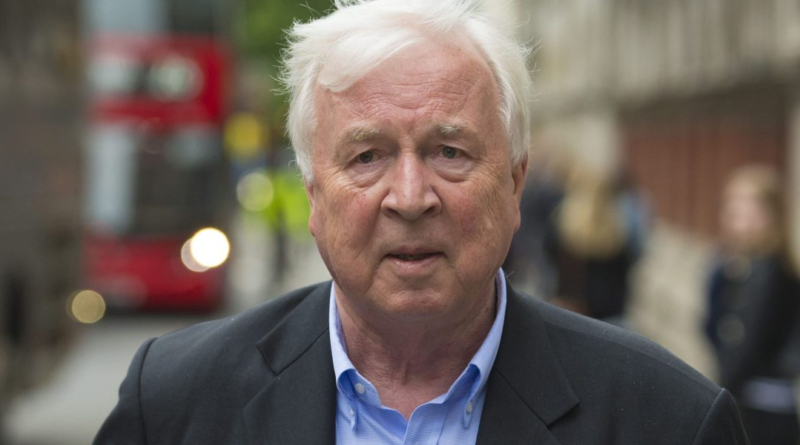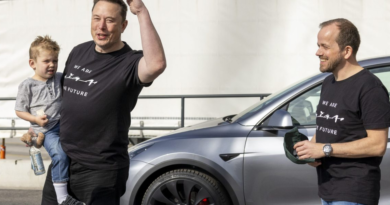Meet the 81-year-old CEO who built a $10.4 billion luxury cruise line tailored just for baby boomers: ‘They’re the richest group we have around’
A veteran cruise attendee at just 24 years old, Julia Wilcox is used to her inbox flooding with promotional emails from cruise lines courting loyal customers. But Wilcox, who vlogs her cruise experiences on TikTok, said one cruise line takes a more idiosyncratic approach to their marketing: Two or three times a month, she’ll get thick and glossy paper envelopes in the mail from Viking Cruises, the luxury cruise line which with she took a 10-day trip in January 2023. It’s the only cruise company that sends her paper mail—and it does so persistently.
“I get so much paper mail from Viking. I’m like, this is insane,” she told Fortune. “You could send me on a free cruise for the amount of paper and things that you send me.”
While anomalous in its marketing strategy, the logic behind Viking’s insistence on sending snail mail makes more sense after Wilcox, a Gen Z TikToker, admitted she’s not the company’s target audience. In fact, she was four decades younger than the cruise guests’ median age of 60 or 70. That’s just how Viking wants it.
“They’re the richest group we have around,” Viking CEO Torstein Hagen said in a May 1 CNBC Squawk on the Street interview. “They have the money; they have the time.”
Hagen, who at 81 surpasses his baby boomer target audience, has tailored the cruise to the tastes of the older demographic that holds 70% of the country’s disposable income. There are no kids under 18 allowed, and no casinos aboard. Instead, Viking’s line of 92 vessels—traveling to all seven continents and employing a staff of 10,000—offers walking tours of European cities and cheese tastings.
“It’s a quite serene environment for people up in their ages,” Hagen said, “and for curious people who want to go to destinations, not [who want] to go on waterslides and the like.”
Hagen’s strategy has certainly worked thus far. Viking, with a $10.4 billion valuation, raised $1.5 billion in its initial public offering on May 1, the highest of any company this year. Per an SEC filing from last month, Viking experienced 14.4% growth from 2015 to 2023, the biggest leap of any luxury river or ocean cruise during that period.
“We have a very, very clear focus, and that is reflected in all our customer ratings, the rewards we get, and so forth,” Hagen told CNBC. “It doesn’t make us as large as the others, but it certainly makes us more attractive to the consumer.”
Viking did not respond to Fortune‘s request for comment.
The precision and analytical approach Hagen brings to the company reflects his initial pursuit of physics from the Norwegian Institute of Technology before he came to the U.S. and got his MBA at Harvard. Originally from outside of Oslo, the Norwegian developed his business intuition through failure before success. As CEO of cruise line Royal Viking in the 1980s, Hagen arranged for a $240 million management buyout that failed when a competitor made a surprise purchase of the company. He was soon ousted from the role.
Hagen, who operates the company alongside daughter Karine Hagen, founded Viking in 1997 at 54. He considered it a humble venture composed of “two guys with two mobile phones and four river ships,” according to the company prospectus. From its maiden voyage, Viking’s goal was, in Hagen’s words, to be a thinking person’s cruise, not a drinking person’s cruise.
The flow
Viking has benefited from opportune timing for the cruise industry, namely its recovery from pandemic lockdowns that had wealthy vacationers itching for indulgent respites. Patrick Scholes, managing director of lodging and leisure equity research at Truist Securities, is bullish on the industry’s future because of that high demand.
“People want a vacation,” he told Fortune. “They’re looking for something different that they hadn’t done for the first two, three years of COVID, which certainly was going on a cruise ship.”
Cruises developed a reputation during the pandemic, as their closed quarters, conducive to contagious disease, sometimes resulted in boats docking early. Even Viking took a hit after 100 passengers on a June 2023 cruise battled norovirus. Companies sweetened deals to win back customers, offering discounts and promises of private beaches. While restaurants and hotel resorts were slow to recover from the pandemic because of labor shortages, cruise ships’ presence on foreign waters meant not having to abide by U.S. wages and employing ample staff of mostly foreign workers. During Wilcox’s Viking cruise, she marveled at the consistent and frequent turndown and cleaning services.
“In that value proposition is the high, consistent level of staffing and service on a cruise ship,” Scholes said. “You’ve been to a restaurant, you’ve been to a hotel—staffing is a problem, is a challenge after COVID. And cruise lines have not had that problem.”
Bob Levinstein, CEO of travel agency CruiseCompete, told Fortune Viking especially lives up to its value promise, mastering food, service, excursions, and communication into a reliable product.
“They just really have it nailed down,” he said.
More growth for the company is on the way. Having weathered the pandemic, Viking has 24 ships on order, an option for another dozen, and ambitious plans to expand its Chinese customer base to 150,000 passengers by 2025. Viking’s resilience in a tough time for the industry made the decision to go public a no-brainer for Hagen.
“The private equity firms, at some stage, have to create liquidity from their investments, and they’ve been in now for eight years—so it was as good a time as any,” Hagen told Fortune last month. “During the pandemic, it was not easy, and I think now coming out of that and having good results, that was the natural thing to do.”
The ebb
But tides turn, and the economic waters buoying the cruise business are no exception. As cruise companies accommodate growing demand by commissioning more ships, the promotional packages and companies’ pricing power will ebb, Scholes predicted.
“This is just economic capitalism,” he said. “Come 2029, we’re going to see a lot of new ships, and that’s going to be a lot of cabins to fill. It’ll be difficult to raise prices.”
There’s a reason for Viking to stay level-headed through the industry’s maturation, Levinstein argued. The company’s $1.5 billion IPO was well timed, he said, but it likely won’t make waves for Viking’s future. It’s likely just a way for ownership to stay liquid and pad their wallets.
“That’s only about four of the ocean ships—maybe a little less if prices have gone up since they made their last deal,” he said. “But it’s not game-changing money.”
The cruise’s humble but established amenities aren’t foolproof, either. “The food definitely was a miss,” Wilcox said of her time aboard a Viking, resulting in the “worst” room service hot dog she’d “ever had.” She heard from other cruisers that the specialty menus the cruise promised to change nightly, but the food items offered have been the same for a decade.
The slip-up in Viking’s reputation of rock-solid amenities may be a strike against the “cookie-cutter” model Hagen touts as a reason for the cruise line’s success, but the CEO remains clear-eyed on the company’s philosophy of streamlined, steadfast service.
“In my belief, the moment you try to do everything for everybody, you know what happens?” he said. “You do nothing well.”




